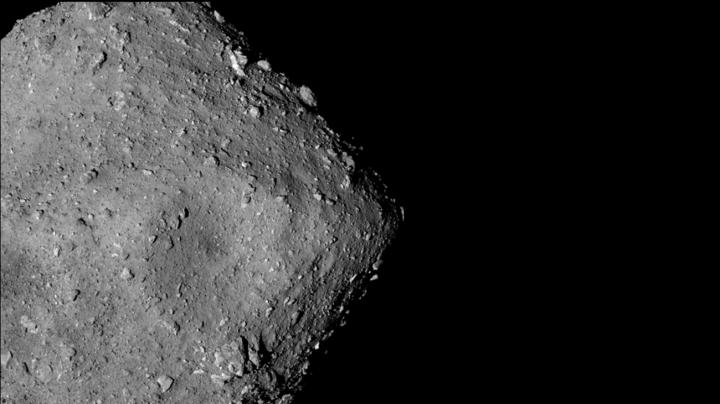Pieces of distant asteroid show ‘bombardment’ that happens to objects in space
Samples come from Hayabusa-2, a Japanese spacecraft that landed on Ryugu in 2018

Pieces of a distant asteroid show the “bombardment” that objects in space undergo, according to the researchers who conducted it.
The new study was undertaken using pieces of the asteroid Ryugu, which was landed on by a Japanese spacecraft called Hayabusa-2 in 2018. When it did, it collected samples and then dropped them back on Earth in 2020.
Since then, researchers have been examining those fragments of a distant object in an attempt to better understand the conditions and processes in space.
In the latest study, they attempted to understand the long-term effects of being exposed to the harsh environment of space.
Anything floating out in space is hit by the “solar wind” of high energy particles coming from the Sun, and a bombardment by tiny meteors that leads to a process called space-weathering.
It is impossible to understand that process using the meteorites that land on Earth. They come from the internal parts of an asteroid and much of the evidence is destroyed by the fiery descent through the atmosphere to Earth.
So researchers have looked at Ryugu as an example of an object that has undergone that process – and pieces of which we can now directly see.
“The signatures of space weathering we have detected directly will give us a better understanding of some of the phenomena occurring in the Solar System,” said Yuki Kimura from Hokkaido University, one of the researchers on the paper.
That work allowed scientists to see that there were small mineral grains called framboise, which are made out of a form of iron oxide called magnetite. Usually, they are magnetic – but they had completely lost those properties, and researchers believe that was the result of collisions with micrometeoroids as small as 2 micrometers in diameter.
Researchers also hope that their work could help “estimate the degree of degradation likely to be caused by space dust impacting robotic or manned spacecraft at high velocity”, Professor Kimura said.
The work is described in a new paper, ‘Nonmagnetic framboid and associated iron nanoparticles with a space-weathered feature from asteroid Ryugu’, published in Nature Communications.
Subscribe to Independent Premium to bookmark this article
Want to bookmark your favourite articles and stories to read or reference later? Start your Independent Premium subscription today.

Join our commenting forum
Join thought-provoking conversations, follow other Independent readers and see their replies